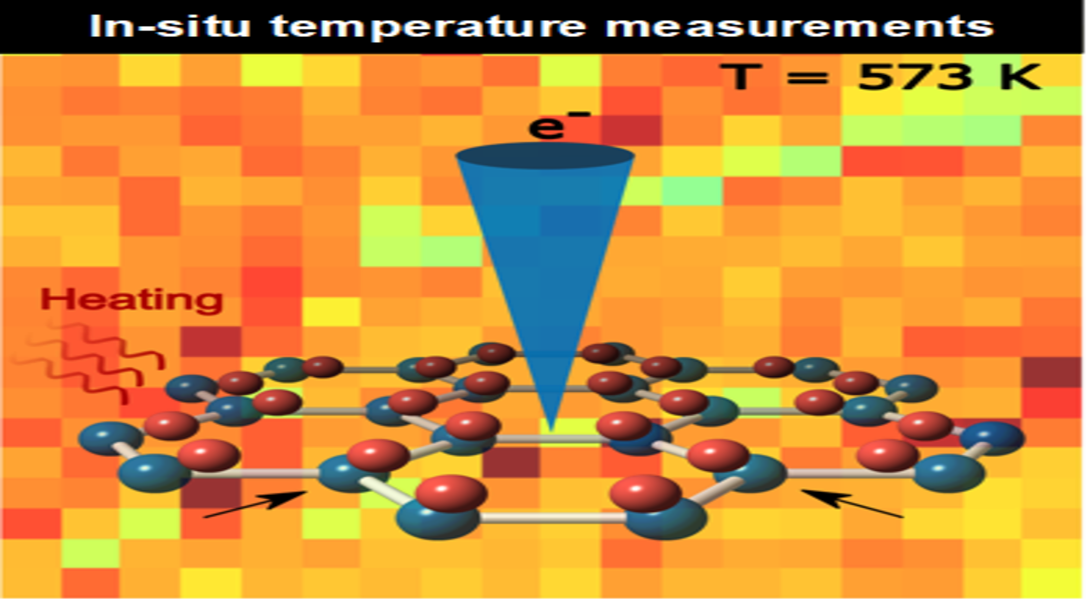2-D Materials
asdfgh

Two-dimensional materials, including graphene, transition metal dichalcogenides (TMDs) and their heterostructures, exhibit great potential for a variety of applications, such as transistors, spintronics, and photovoltaics. While the miniaturization offers remarkable improvements in electrical performance, heat dissipation and thermal expansion mismatch are two key problems in designing electronic devices based on two-dimensional materials. Therefore, the thermal properties of these materials are an important subject of current research in two-dimensional materials, and, correspondingly, new methods are needed for temperature measurements at nanometer scale. We have developed a method for measuring local temperature and thermal expansion for two-dimensional materials in nanometer-scale spatial resolution. It is realized by using scanning transmission electron microscope (STEM) and electron energy loss spectroscopy (EELS) to detect the physics phenomenon, temperature dependent plasmon peak shift.
When the thickness of materials shrinks from bulk to 2-dim, we have shown that the thermal expansion coefficient (TEC) dramatically increases. The resultant larger TEC mismatch becomes a significant limit in the modern design of the electronic nano-device. A practical method to tailor the thermal expansion coefficient of TMDs and an understanding of the related mechanism are needed. In this contribution, we introduce alloy engineering to tune the thermal expansion coefficients of monolayer Mo1-xWxS2 and study the interplay between thermal expansion and local defects using STEM/EELS and first-principles calculations.